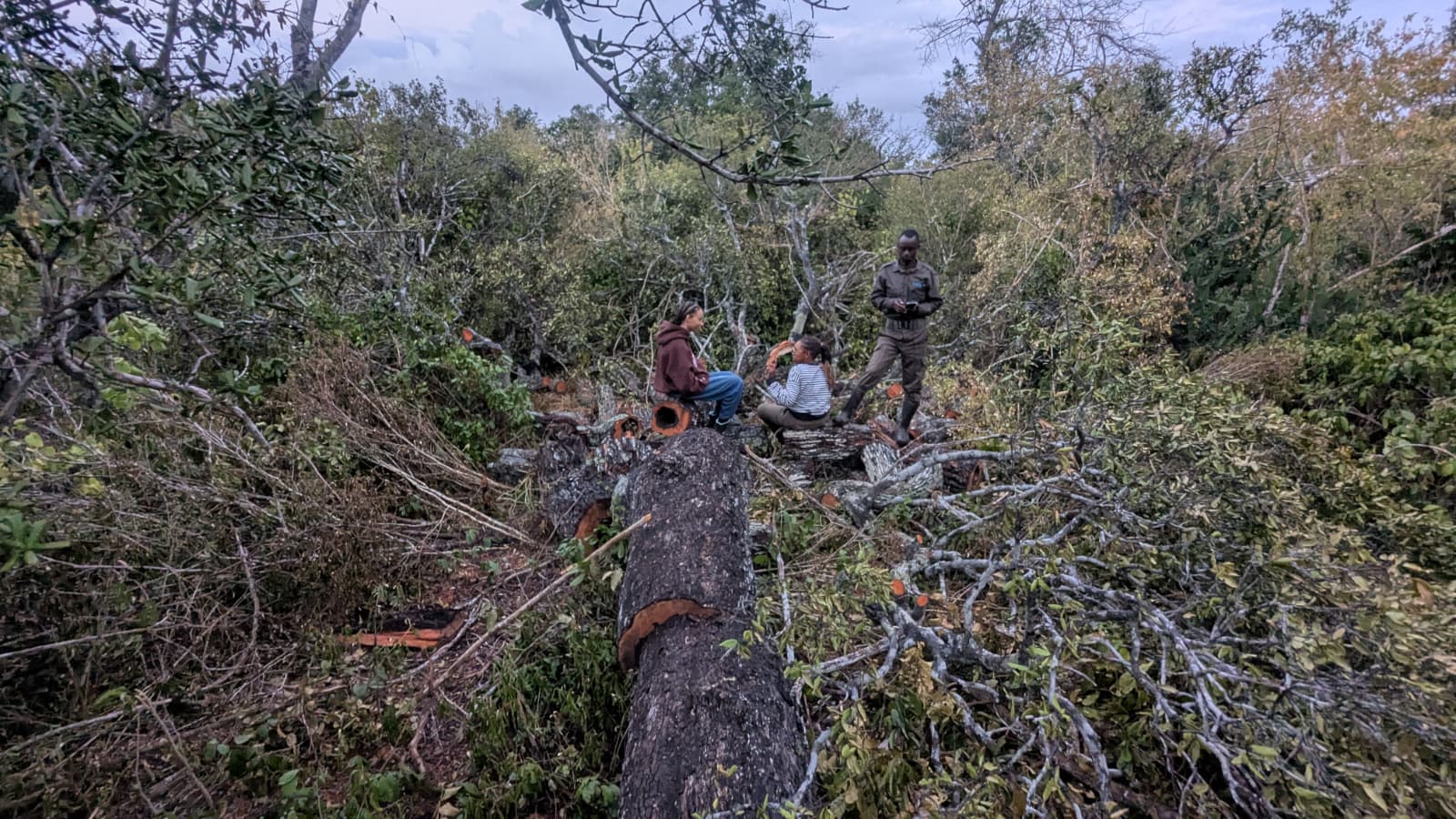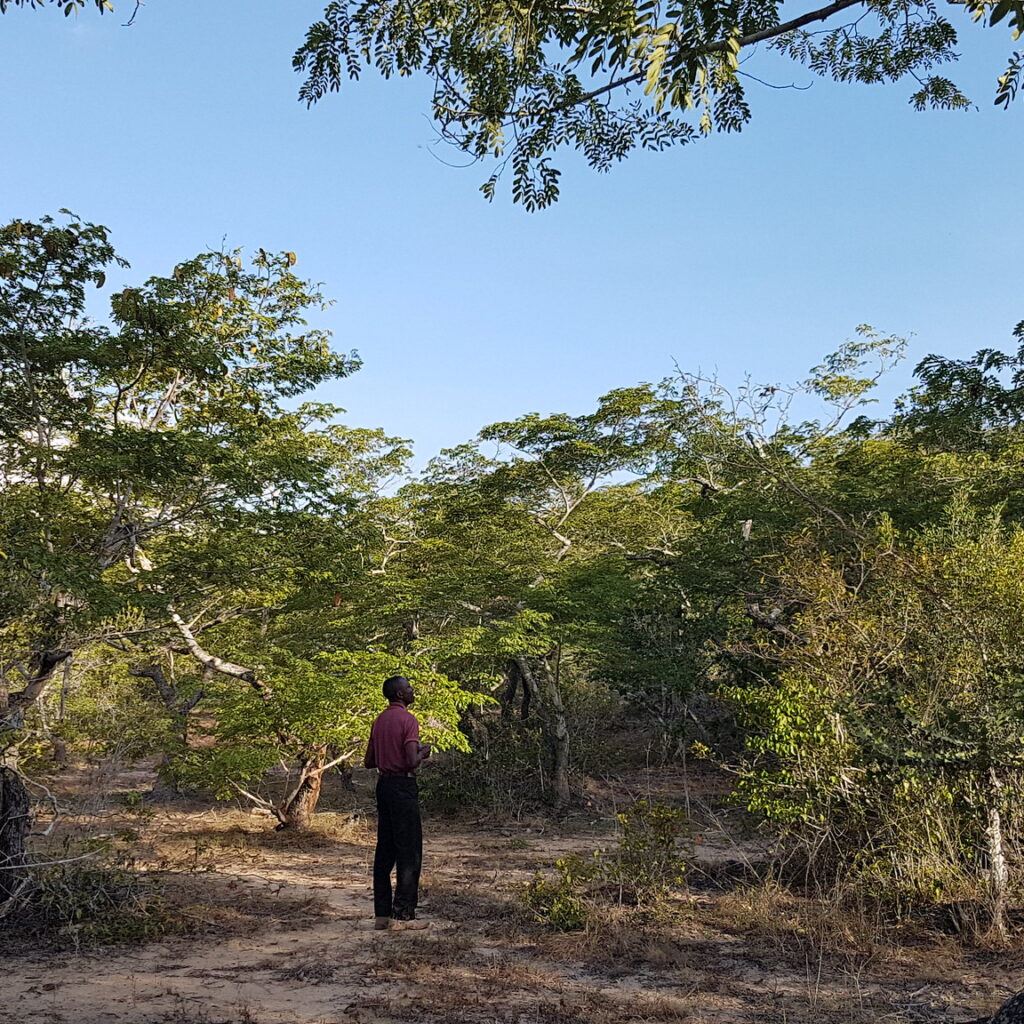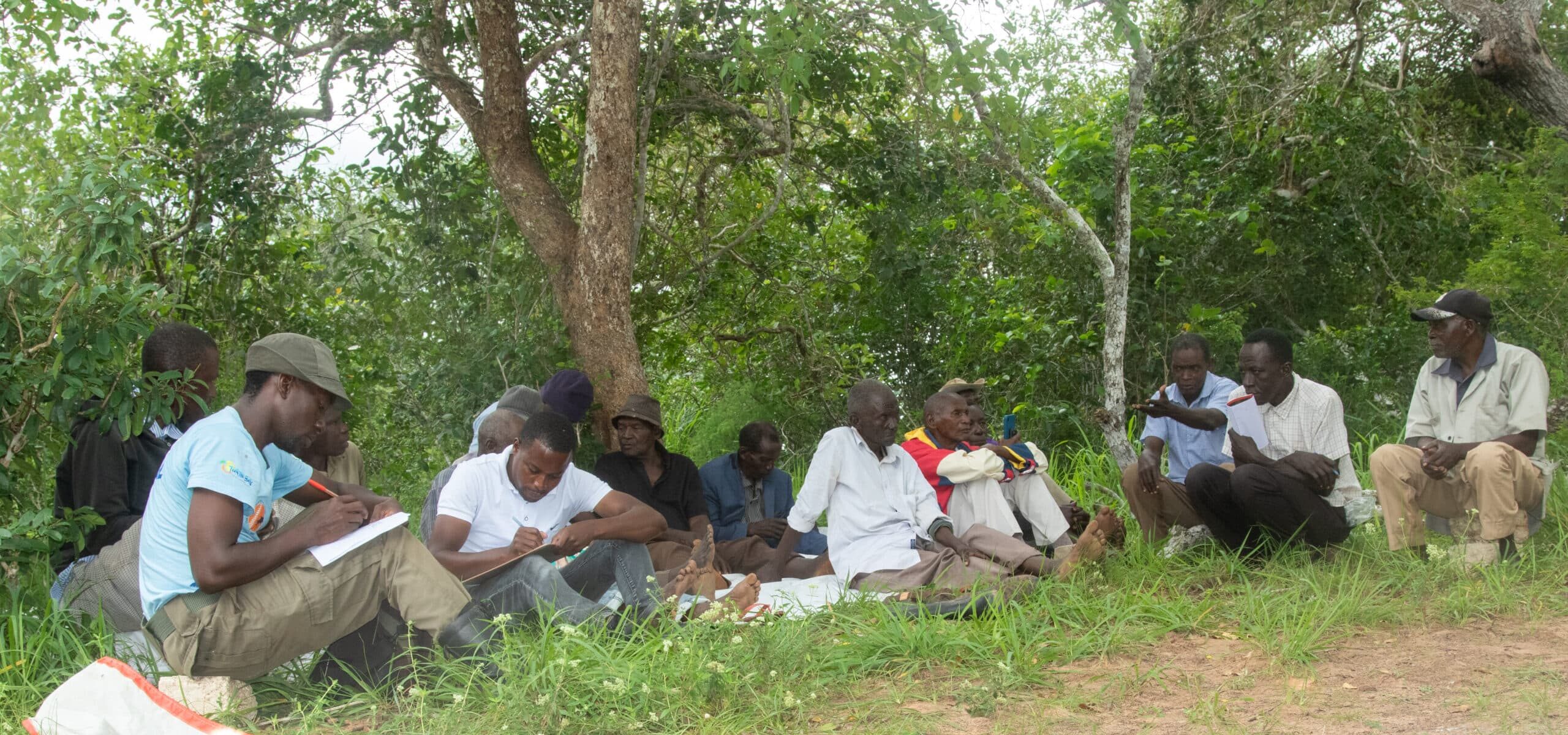Threatened Trees Restoration in Dakatcha
If you walk into Dakatcha Woodland on a quiet morning, the first thing you notice is the silence broken by birdsong. Towering mkulu trees rise high above, their spreading canopies filtering the sunlight and offering shade that has sheltered people and wildlife for generations. Beneath them, bats roost and hornbills feed on insects. These trees are not just part of the forest, they shape the whole ecosystem.
Dakatcha itself is one of Kenya’s last remaining coastal forests, and home to species found nowhere else in the world, such as the endangered Clarke’s weaver. Yet, like many coastal forests, this woodland is under severe pressure. Expanding farms and charcoal burning have already destroyed large areas, and with every passing year more old trees are lost. In some parts of the woodland, no mature mkulu remain standing.

For this reason, A Rocha Kenya has launched a three-year initiative, Conserving and Restoring Threatened Species in Dakatcha, funded by the Franklinia Foundation. The project focuses on conserving and restoring 20 tree species listed as threatened on the IUCN Red List, all found within the Dakatcha Nature Reserve and its surrounding areas.
Franklinia Foundation is a Swiss-based organisation dedicated to conserving globally threatened tree species; their support connects Dakatcha’s conservation work to a global movement to safeguard tree diversity.
The Trees of Dakatcha
Within the A Rocha Kenya Nature Reserve, 20 tree species are listed on the IUCN Red List. These threatened trees are essential for the survival of rare wildlife such as the Sokoke Scops Owl and the Golden-rumped Elephant Shrew. Many also have medicinal value, some carry cultural meaning, and all sustain the wider ecosystem by storing carbon, regulating rainfall, cleaning the air, and enriching the soil.
Yet many of these trees are now scarce. As one elder reflected:
“Haho kapindi ere ithele iyo mihi, saii mingine here Kasikiro Paka ukiamba udzawona unahirikwa kirahoni.”
“In the past, trees were many and found everywhere, but nowadays, if you say you’ve seen a certain tree, you must first prove it.”
This local memory captures both the scale of loss and the cultural knowledge at risk, and it underlines why conserving what remains, and restoring what has been lost, is urgent.
Mapping and Monitoring
The project begins with mapping. The science team is documenting where each of the 20 threatened species occurs within the reserve and surrounding areas. They are employing the use of a grid system to record presence and abundance of these trees. As part of the same work, the team is also checking whether Dakatcha hosts additional threatened tree species that are typically associated with other coastal forests such as Arabuko-Sokoke Forest.
Half of the reserve has already been surveyed. In areas already surveyed, plant phenology is being carried out, while in the remaining areas it will follow once surveys are complete. Plant phenology involves recording when trees bud, flower, and fruit, gradually building a dataset that will shape long-term restoration strategies.


Working with Communities
Because the forest is at the centre of people’s lives in Dakatcha, restoration cannot happen without the participation of local communities. From collecting firewood and herbal medicines to keeping bees for honey, the forest supports daily life in many ways. These are only a few examples, the reality is that Dakatcha’s wellbeing and that of its people are strongly linked.
The project is therefore training residents in tree nursery management and sustainable use of forest resources, so that the woodland can continue to provide for people without being exhausted. Communities are also directly involved in seed collection and will play a vital role in planting when seedlings are ready.
Gathering traditional ecological knowledge is another crucial strand. Elders have shared how certain species were once conserved and valued, helping to merge cultural wisdom with modern conservation science. This combined knowledge is being used not only for restoration planning but also for environmental education, giving schools in Dakatcha new ways to connect with their local heritage.

Steps Towards Restoration
Parallel to mapping and monitoring, the project is laying the groundwork for large-scale restoration. A tree nursery site has been identified within Dakatcha, and a water tank has been installed to support seedling growth. Seed collection will follow as the phenology work identifies optimal timing. Degraded areas in and around the reserve are being mapped in collaboration with the Centre for Ecosystem Restoration Kenya (CER-K), paving the way for targeted enrichment planting that reintroduces threatened species and restores the woodland’s natural structure and function.
Looking Ahead
The vision for Dakatcha is one of ecological renewal. As enrichment planting and natural regeneration take hold, restored woodlands will once again provide secure, long-term habitat for Sokoke Scops Owls, Golden-rumped Elephant Shrews and many other species. Mature mkulu and other indigenous trees will help regulate rainfall, anchor soils, store carbon and improve air quality, the full suite of ecosystem services that a healthy coastal forest provides.